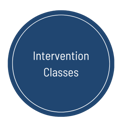Years ago, as part of a team opening a new high school, our principal emphasized the importance of site-based decision-making. With input from our leadership team, we dedicated considerable thought to our master schedule. Our principal reminded us that scheduling reflects our priorities, leading us to adopt a nonconventional schedule to support deep learning for all students. We decided on a 4x4 block schedule but heard the concerns raised by stakeholder groups, so we modified it. We alternated classes by quarter instead of semester. We also added an extra "floating block" in 9th and 10th grade English to offer additional literacy instruction for all students.
In my role, I was tasked with designing a strategic reading department. We introduced a required graduation elective called Academic Literacy for all 9th graders, drawing on the West Ed Strategic Literacy Initiative's Reading Apprenticeship framework. Additionally, I created a 9th-grade English class to support students needing extra assistance. Recognizing the benefits of consistency, I designed a year-long course covering the two-quarters of English, the floating block, and the Academic Literacy course. This meant my students still had the same core instruction as their peers, but I had the privilege of teaching them for the whole year instead of them moving between three teachers.
| Scheduling is an essential piece of MTSS infrastructure. |
Scheduling is an essential piece of MTSS infrastructure. If every student deserves access to the support they need, we have to prioritize that in the way we set up the school day. A well-thought-out master schedule can ensure time for intervention and enrichment to move all students forward in their learning. Thoughtful scheduling also ensures that teachers and teams have time to appropriately plan instruction and intervention.
Consider your student population, staffing, and what model will fit your needs: There is no one proper schedule.
Scheduling Options
Needs vary between elementary, middle, and high school levels. School leaders and their leadership teams can ask several key questions to help guide decision-making when creating their master schedule:
| 1. | What are our school's goals and priorities? How does the schedule reflect our mission and vision? |
| 2. | What are our state and district guidelines for instructional minutes, including the required time for specific content areas? (i.e., the state requires 180 minutes/day, 90 minutes of literacy instruction daily…) |
| 3. | How do we include adequate time for intervention/enrichment to meet the needs of all students? Does this allow students to move in and out of Tier 2 and 3 interventions or supports, as data indicates? |
| 4. | How do we schedule teachers' joint planning and collaboration time? |
While there is no one proper schedule, there are a variety of options that schools can consider. If you and your team are considering maximizing your instructional minutes and fully supporting your Multi-Tiered System of Supports, here are some models for scheduling for each level.
Elementary Schools
.png?width=153&height=153&name=intervention-block%20(2).png) |
Intervention/Enrichment Block:
|
Secondary Schools
Because secondary schools serve larger student bodies and are departmentalized, scheduling is more complex. There are multiple paths scheduling can take:

|
WIN (What I Need) Period: This is a scheduled period that the whole school participates in during the day. This schedule incorporates both intervention and enrichment. Many schools organize some days as "required" activities, such as advisory or study halls. The other days allow students to seek help via teacher support based on what they need or participate in enrichment, including activities like clubs. |

|
Floating Period: Like WIN, this is a scheduled period, but the extra time floats in this configuration and is added daily to a different class period. The classroom teacher can use the time to reteach concepts or provide small group instruction and differentiated learning activities. |

|
Intervention Classes: These can be scheduled as a part of the student's regular school day. Students are placed in these classes based on achievement data that indicates a need for additional support. This schedule limits the flexibility to move students and often takes the place of courses like electives. |

|
Block Courses: If your secondary school utilizes block scheduling, then instructional time can be divided up to include time for small group instruction/intervention/support. This is common practice in elementary schools but has excellent potential in secondary classrooms. |

|
OR . . . you can create a schedule that is specifically designed for your school. I think back to that schoolwide academic literacy course and the yearlong ELA course we offered. We saw an increase in student achievement because of those efforts. We were committed to our mission and vision and were willing to consider multiple options to ensure we supported all students. |
Master Scheduling Challenges
Effective scheduling takes commitment and creativity. How do you tackle scheduling challenges to meet all students' needs and utilize your resources effectively?
Scheduling Challenge #1: Resource Allocation
Schools can improve resource use and ensure fair access to education by working together on schedules and resource planning. Include teachers, administrators, and support staff in scheduling decisions. Transparent communication and regular feedback help set priorities for initial scheduling and ongoing adjustments.
Scheduling Challenge #2: A Variety of Student Needs
- Establish processes for collecting and evaluating data! Screening, progress monitoring and benchmark data help to create and then to realign groups in a way that meets the needs of each student.
- Consider a tutoring program. Tutoring has been shown to be an effective strategy in mitigating learning gaps. A well-designed tutoring program can help address a wide array of student needs. When scheduling tutoring, research shows that in-school support is about twice as effective as outside tutoring.
Scheduling Challenge #3: The Number of Seats Does Not Meet the Needs Indicated By the Data
First, if your data indicates that a large percentage of your population needs Tier 2 or 3 support, then start with a hard look at your core instruction. We cannot intervene our way out of poor core instruction.
- Implement flexible scheduling options like block scheduling to optimize seat availability by staggering class times and utilizing shared spaces more efficiently.
- Consider extended-day or summer school/intersession options. Research shows that simply adding more time is not the solution. We need to be strategic, utilizing our data to focus on key areas in these extra minutes. In a report from the Rand Corporation, researchers found that the impacts of well-designed summer learning stay with students for 2 years. (Sloan xv)
Scheduling Challenge #4: Secondary Students Have To Meet Local and State Credit Requirements for Graduation
Aligning our core instruction supports meeting the needs of all students and stays in line with meeting those graduation requirements. A WIN period can still count towards instructional minutes while not replacing a credit-required course.
Additionally, concentrated or even double doses of instruction in foundational classes can help fill academic gaps and move students forward better prepared for upper-level classes. This is what we did with the strategic reading course requirement and the extra floating block of English 9 instruction in the high school I served. Those counted as elective credits toward graduation and prepared students for the following three grade levels. Schools have done this with key classes like algebra based on data trends to address needs and reduce course failures preemptively.
Scheduling Challenge #5: Tracking Attendance
A concern often raised in secondary schools is, "But if the students are choosing where to go for intervention or enrichment during a flex period, how do we know they attended?" A critical first step to adopting something like a flex period (ie-WIN) is to build stakeholder support from the beginning. If students, families, and staff all agree on the value of this, it increases the odds of its success.
- Add the extra support/enrichment time to a different period each day to reduce student movement and make it easier to know where students are.
- Work with your district to build an attendance option for your flex period into your student management system.
💡 Related Resource: How To Track and Support Student Attendance in MTSS
Closing
A solid Master Schedule is an essential component of MTSS. Take time to evaluate your school, staff, and student needs. Consider your data trends. And find the scheduling solutions that will support your students and staff. It’s a team effort that yields big results in the day-to-day life of your school, and in student outcomes.
Key Takeaways:
- Scheduling is a part of building a strong MTSS infrastructure
- There is no one right way to schedule. You should consider your mission, vision, population, and staffing resources.
- There are flexible ways to address master scheduling challenges.
Branching Minds exists to help make your MTSS vision a reality! Reach out today talk about how to build an effective MTSS infrastructure. 🚀
|
Citations
Canady, Robert Lynn, and Michael D Retlig. “The Power of Innovative Scheduling.” ASCD, 1 Nov. 1995, www.ascd.org/el/articles/the-power-of-innovative-scheduling.
Durrance, Samantha. “Implementing MTSS in Secondary Schools: Challenges and Strategies .” Comprehensive Center Network, Jan. 2023, region6cc.uncg.edu/event/implementing-mtss-in-secondary-schools-challenges-and-stories/.
MTSS Center, AIR. “MTSS Schedules.” MTSS Schedules | Center on Multi-Tiered Systems of Support, Center on Multi-Tiered System of Supports, Feb. 2022, mtss4success.org/resource/mtss-schedules.
Sloan McCombs, J., Augustine, C. H., Schwartz, H. L., Bodilly, S. J., McInnis, B., Lichter, D. S., & Brown Cross, A. (2012). Making summer count: How summer programs can boost children’s learning. Education Digest: Essential Readings Condensed for Quick Review, 77(6), 47–52.
![[Guest Author] Teresa Bunner-avatar](https://www.branchingminds.com/hs-fs/hubfs/Imported_Blog_Media/Teresa%20Bunner%20headshot-1.png?width=82&height=82&name=Teresa%20Bunner%20headshot-1.png)
About the author
[Guest Author] Teresa Bunner
Teresa is an Educational Consultant with Branching Minds. She has had the privilege in her 30 year public education career to serve in a variety of roles where she has honed her skills as a classroom practitioner, coach and education leader. She served for over 20 years as a classroom teacher teaching almost every grade from 1st- 12th. At the school level and district level, Teresa held roles as a literacy coach, instructional coach, program academic specialist, district coordinating teacher for secondary literacy and the Director for Student Engagement in the Office of Equity Affairs in the largest school district in North Carolina. All of Teresa’s experiences have helped her gain expertise in working with students and families to co-create teaching and learning spaces and experiences that center and affirm our students’ and families’ cultural heritages as assets. Teresa is also a mom and is pretty proud of the four amazing human beings she raised. You’ll often find her hanging out with them talking books, social issues and (currently) cheering on her youngest as a college swimmer.

Your MTSS Transformation Starts Here
Enhance your MTSS process. Book a Branching Minds demo today.













.png?width=1436&height=956&name=Master%20Scheduling%20for%20MTSS%20Options%20and%20Challenges%20(2).png)



.png?width=716&height=522&name=MTSS-interventions-secondary-school(preview).png)
.png?width=716&height=522&name=5%20Tips%20for%20De-Escalation%20and%20Building%20Strong%20Relationships%20with%20Students(preview).png)